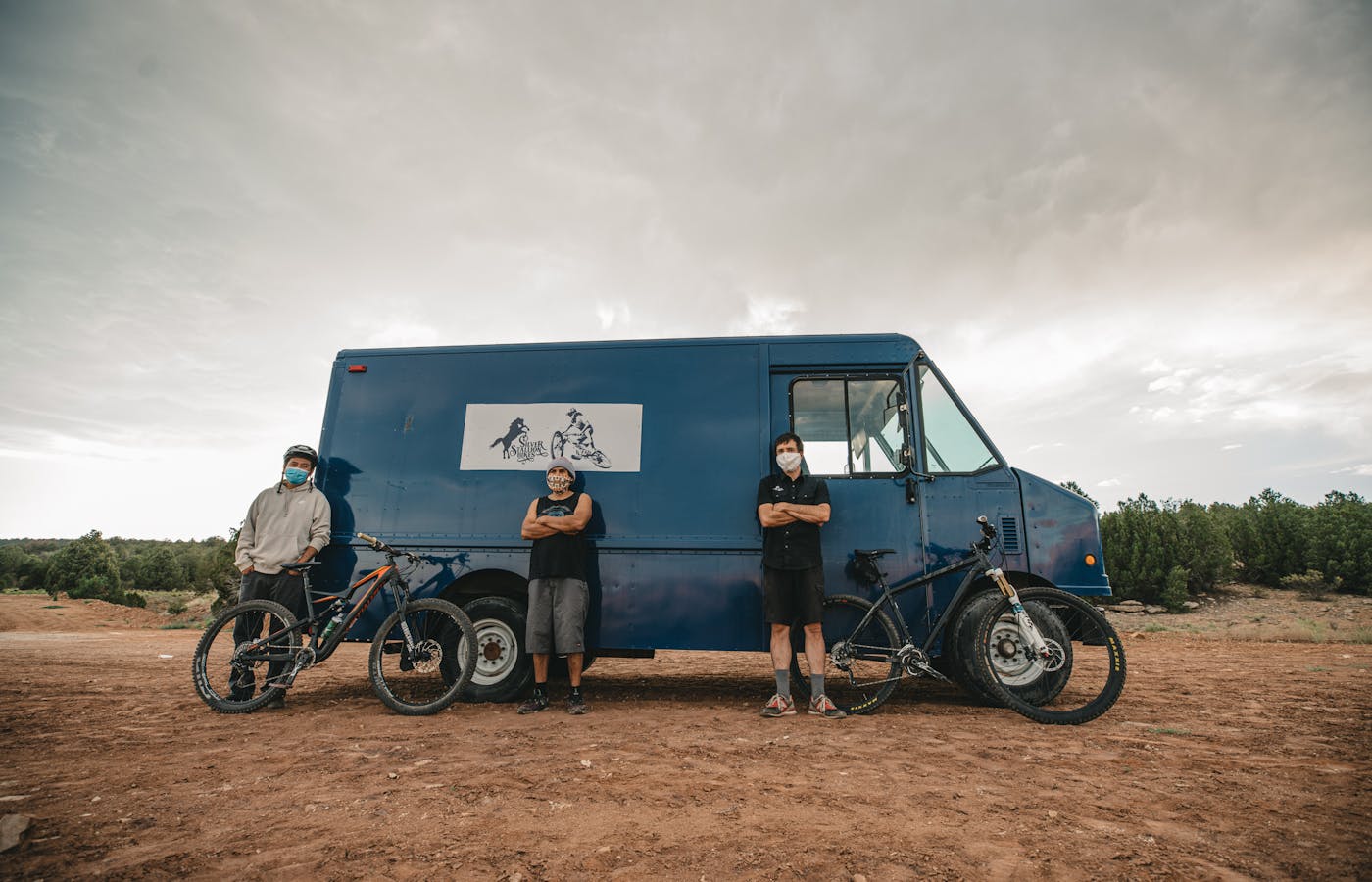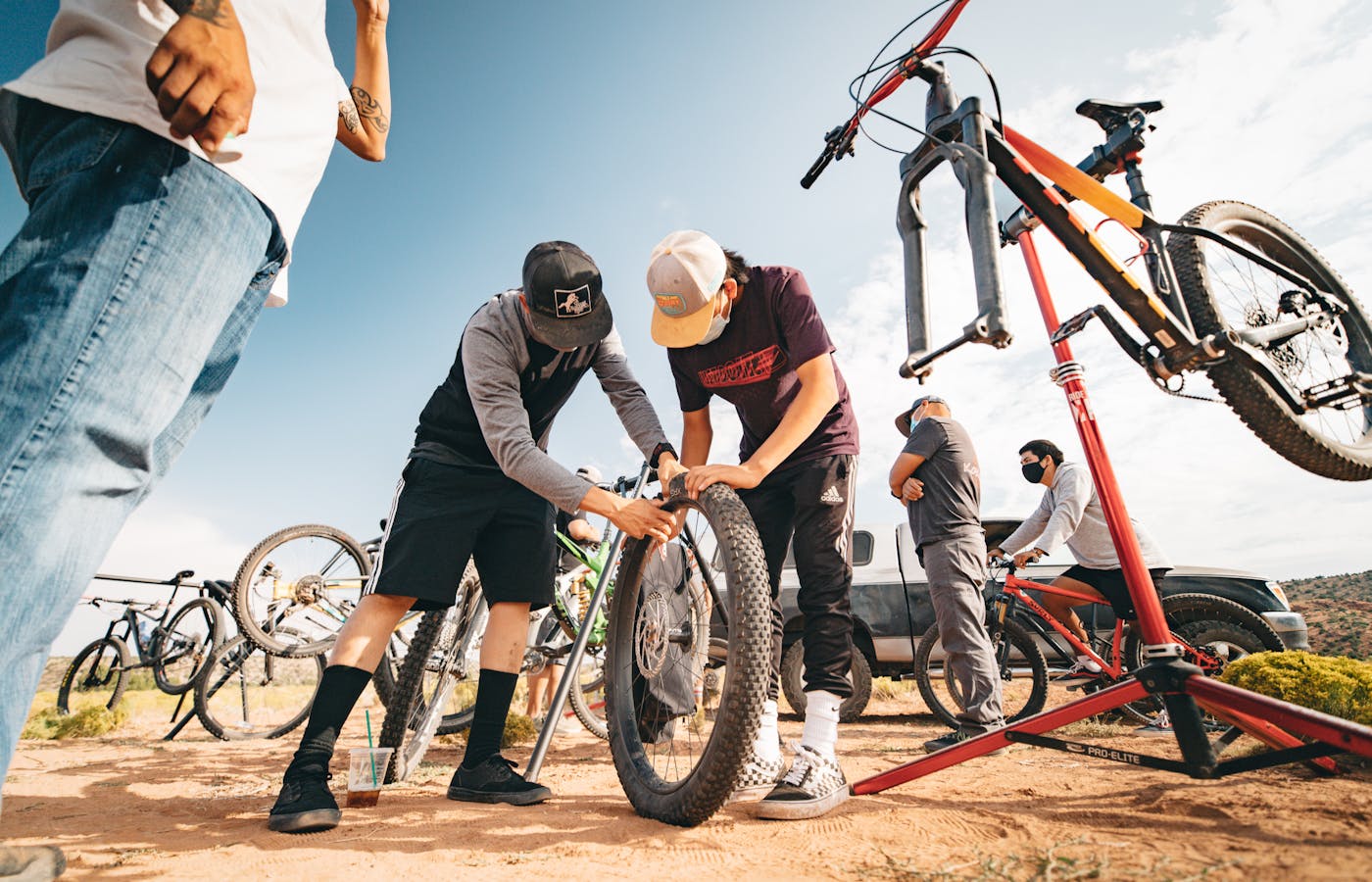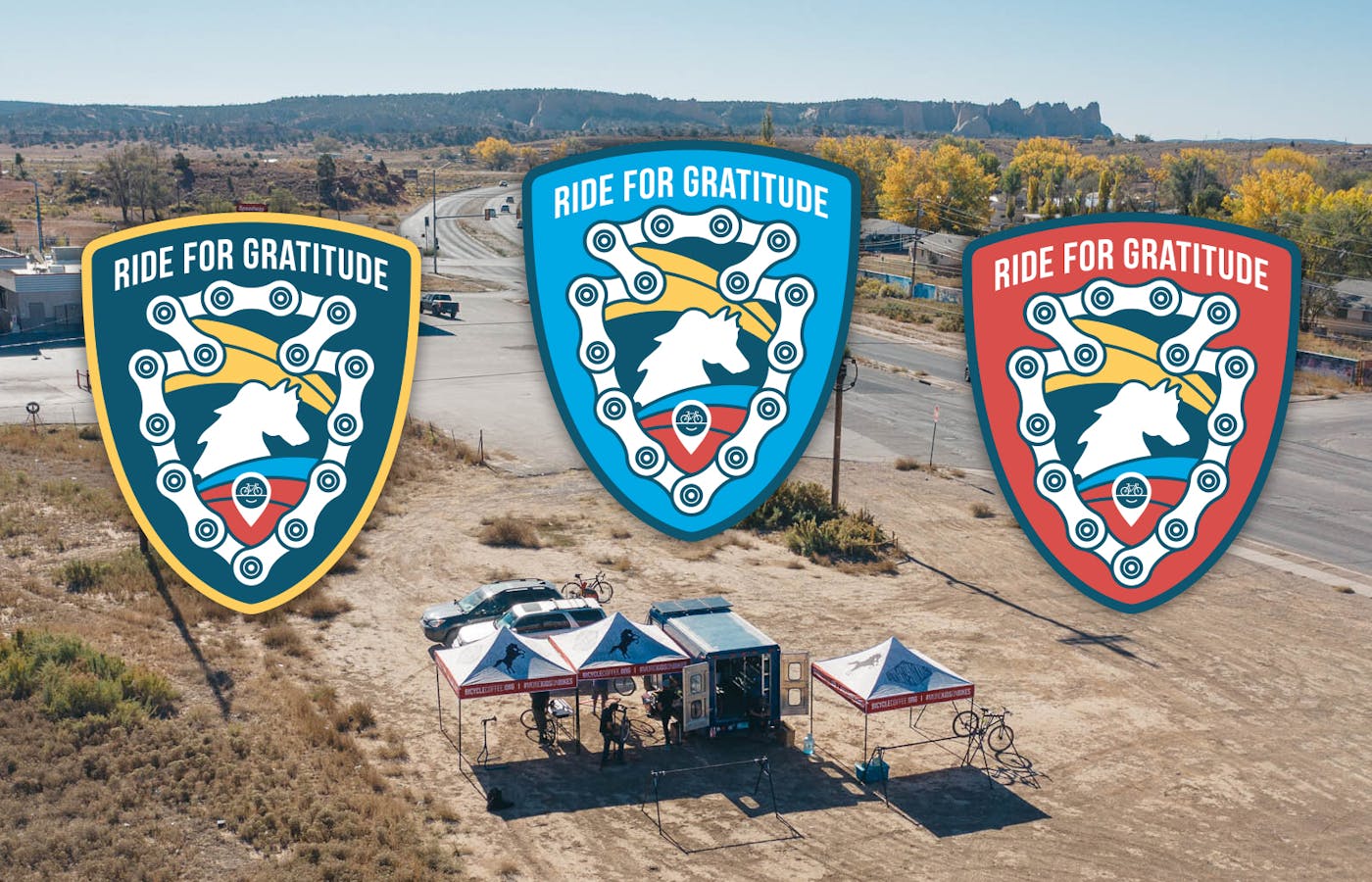Explore Our Network of Sites
Search
By:

In celebration of Native American Heritage Month, our November Ride Spot Challenges are raising money for Silver Stallion, a bike nonprofit serving Dinétah.
At 27,413 square miles, the Navajo Nation is bigger than 10 U.S. states and the largest land area retained by a Native American tribe in the country. Occupying portions of northeastern Arizona, northwestern New Mexico and southeastern Utah, its geography is defined by arid deserts and high plateaus, mesas, mountains and forests, all largely undeveloped. The Navajo Nation has its own police academy, universities, hospitals, bar association and court system, but to this day, it doesn’t have a single bike shop.
In 2019, former pro bicyclist Scott Nydam was living in Gallup, New Mexico, a reservation border town, where he ran Silver Stallion Coffee & Bread. It was there that he befriended a customer, photographer Shaun Price. Price is Diné, the preferred term for the people of Dinétah, or the traditional homeland of the Navajo tribe. The pair bonded over bikes and when the shop’s baker decamped for the east coast, they collaborated on turning Silver Stallion into a nonprofit coffee and bike shop, with the goal of teaching local youth barista and wrenching skills that could translate to a job anywhere.
Today, Silver Stallion operates a brick-and-mortar shop in Gallup, as well as a Mobile Ride Center that hosts community repair events throughout Dinétah. In addition to fixing up people’s bikes free of charge, Silver Stallion helps build trails, refurbishes donates bikes from Free Bikes 4 Kidz, runs bike mechanic programming through the Park Tool school and promotes kid rides and public school partnerships with Outride, All Kids Bike and Project Bike Tech, alongside operating a selection of youth development programming, including National Interscholastic Cycling Association (NICA) teams. Silver Stallion currently contracts with eight coaches and mechanics, all Diné, and hopes to continue ramping up its efforts as funding allows.

“One of my earlier epiphanies was that, in our region, nonprofits come and go but the things that really stick around are hospitals and schools,” said Nydam. “So we’ve taken a pragmatic, structural systems approach to address inequity. We’re not so worried about the finish line — we’re trying to get kids to the start line.”
Nydam, who himself isn’t Native, raced and worked for BMC and sees the bicycle as a tool that can help transform lives. His superpower is merging decades of industry experience with a vision of a self-sustaining bicycling ecosystem in one of the most underserved regions in the country. Bikes have always been present in the Navajo Nation but what was lacking was a culture and the resources to ensure it thrived.

“Talking with more and more people here, you realize there’s been a lot of initiatives involving bicycling programming,” said Nydam. “The concern is that as soon as someone like myself, or those passionate few that are behind those efforts, step aside or are no longer there, then the operations and the effort also ceases to be there.”
Nydam is building Silver Stallion to last by empowering youth and cultivating Diné leadership. Part of his strategy also involves partnering with larger nonprofits and government organizations, including the New Mexico Outdoor Recreation Division, the Catena Foundation and the Southwest Indian Foundation. In a region where the bike industry had little to no presence for decades, Nydam is trying to change the narrative.
During the month of November, PeopleForBikes’ Ride for Gratitude campaign directly benefits Silver Stallion, with $10 being donated for each of the first 500 riders to complete an 11-, 25-, or 50-mile Challenge. Thus far, the Challenges have been incredibly popular, with 500 people completing one within the first week alone. Thanks to our friends at SRAM, a matching $5,000 donation will be awarded if 200 riders complete the Silver Stallion Century Challenge between November 15 and the end of the month. Adding to the appeal are this month’s Challenge patches designed by Price (below), who continues to work with Silver Stallion as a bike mechanic and creative (he also took all of the photos featured in this article).

Although these Challenges were envisioned as a way to celebrate Native American Heritage Month, Silver Stallion is in need of support year-round. The socio-economic conditions in the Navajo Nation are bleak, with more than 40% of residents unemployed and/or living below the poverty line. The Diné also suffer from health disparities, including elevated levels of obesity and diabetes. While no panacea, Silver Stallion’s model seeks to empower residents with job training and create an environment where folks can enjoy the many benefits of riding indefinitely.
“We want kids, families and adults to be riding and thriving on the bike all year long,” said Nydam. “We’re really trying to create livelihoods and a lifestyle that involves bikes.”
Even the name “Silver Stallion” is closely tied to that overarching vision. The original Silver Stallion was an old saloon in Gallup on Route 66 that preyed on Native patrons, taking advantage of the Navajo Nation’s alcohol ban by overserving and encouraging addiction at its border. Nydam decided to recycle the old name and original sign, transforming a symbol of oppression into one of promise.
Interested in supporting Silver Stallion’s bike programming? Make an individual donation or shoot us an email to get involved on a larger scale.